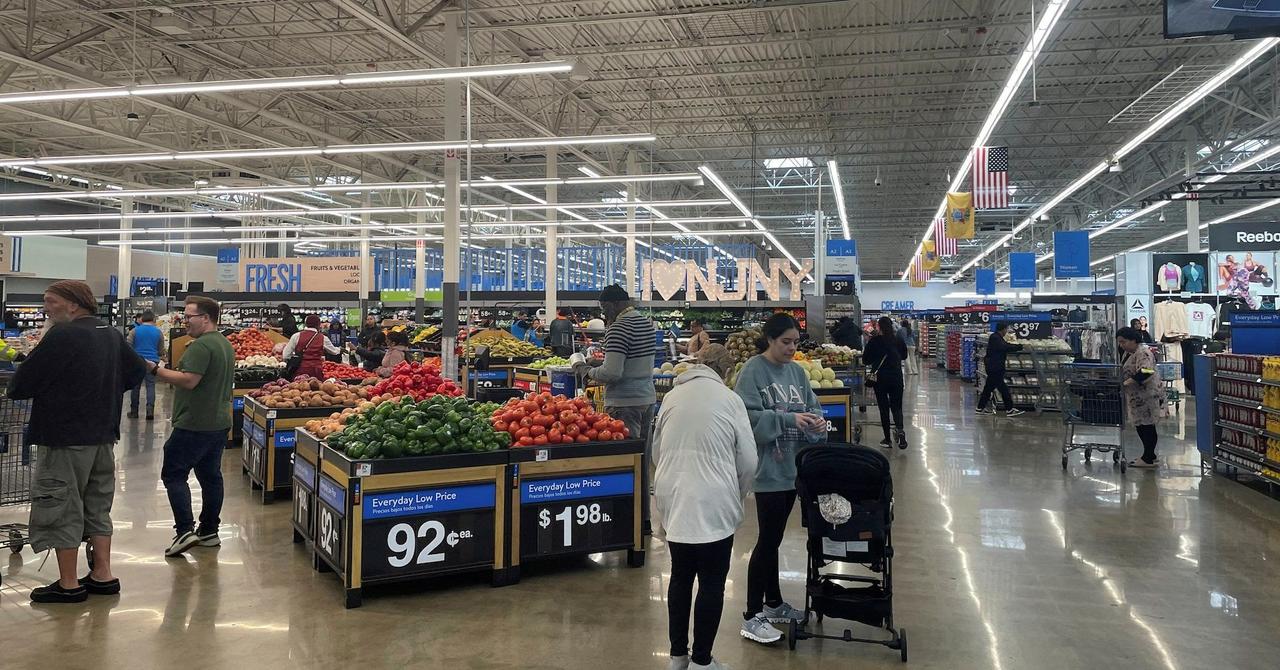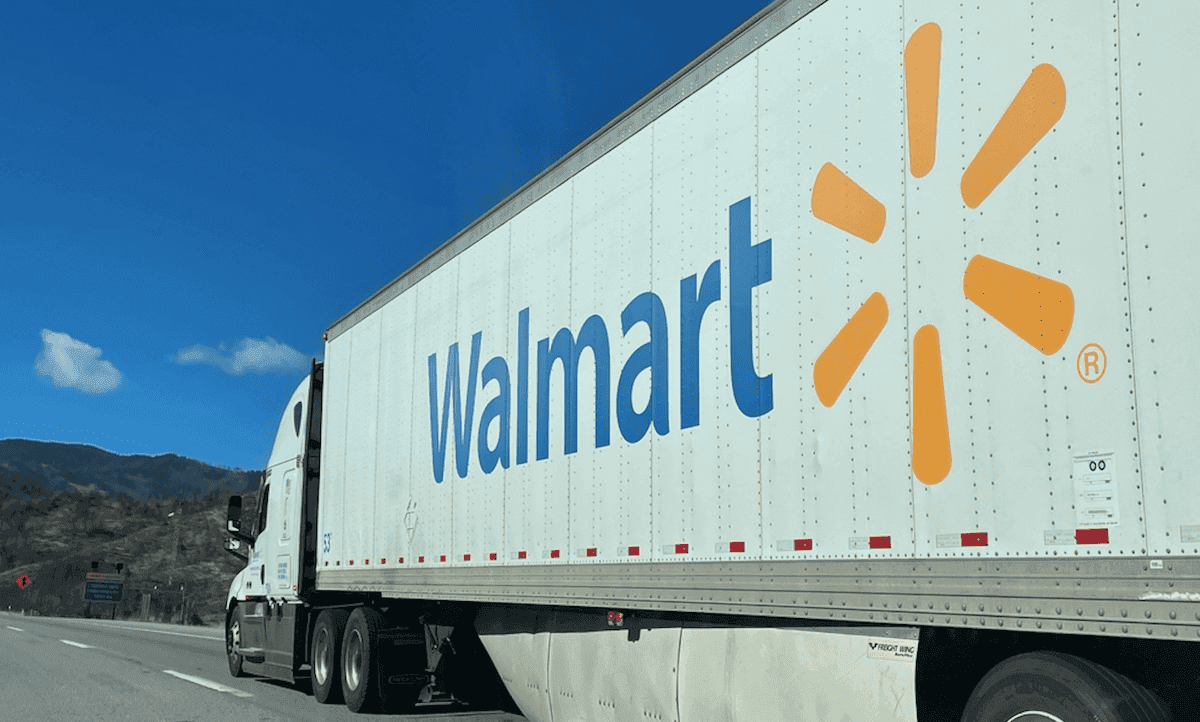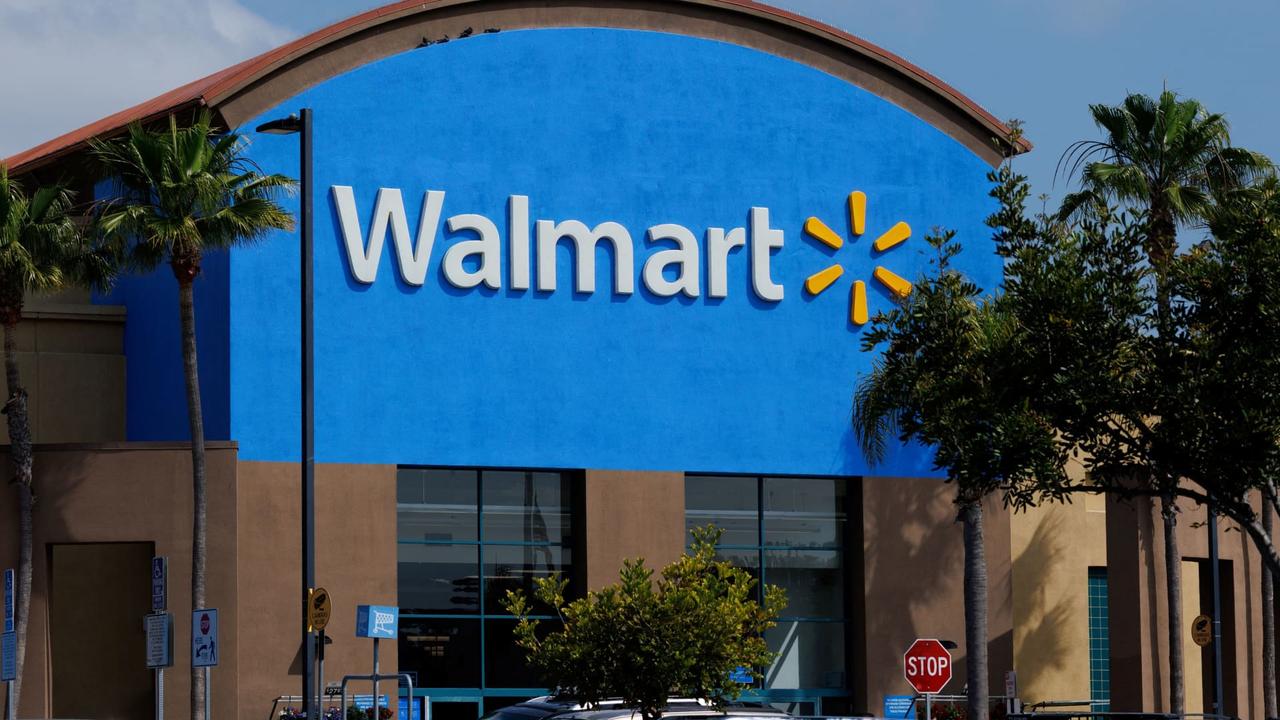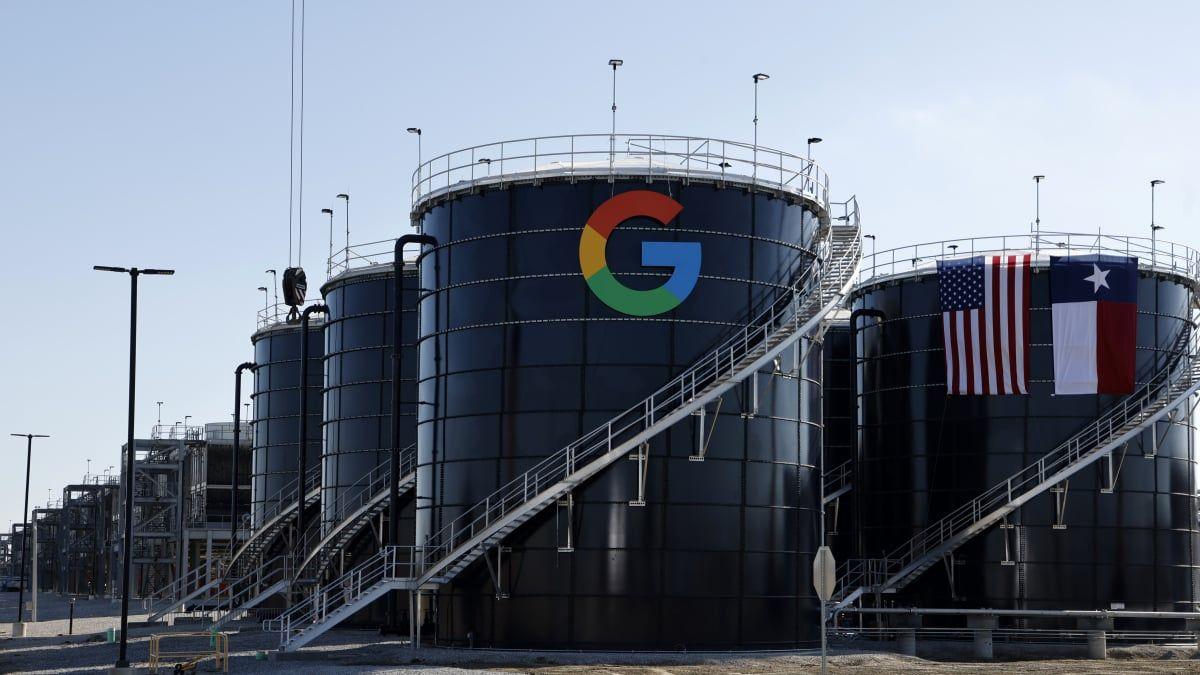Walmart's Tech-Driven Transformation: Battling Digital Rivals with AI and Modern Headquarters
2 Sources
2 Sources
[1]
Walmart Tries to Shed a Stodgy Vibe to Battle Digital-Native Rivals
The DealBook Newsletter Our columnist Andrew Ross Sorkin and his Times colleagues help you make sense of major business and policy headlines -- and the power-brokers who shape them. Get it sent to your inbox. "There are no cash registers in the home office." It's a mantra at Walmart and a reminder that every dollar earned comes from its nearly 11,000 stores worldwide. Everything done at its corporate headquarters in Bentonville, Ark., is an expense. For decades that expense was minimal -- the retailer's main office was a spartan distribution center with wood-paneled offices and few windows. Most of the white-collar employees here were focused on merchandising and logistics. But that thinking has changed as the company has had to figure out how to compete in an increasingly tech-fueled, competitive industry. A big symbol of that is a multibillion-dollar splurge on a new headquarters meant to attract and retain top talent and modernize the ethos of the discount store Sam Walton founded in 1962. Walmart built its empire by dominating on price. But to maintain that empire it must now compete on convenience, breadth and speed. During Associates Week -- its annual gathering of thousands of employees from around the world -- the company made a number of tech-focused announcements, like a new artificial intelligence assistant that it says will help customers shop online and an expansion of its drone home-delivery operation to more cities. The new 350-acre Bentonville campus has a hotel, a food hall, an amphitheater, and massive fitness and child care centers. There are electric bikes to get around. Robots cut the grass and clean the windows. Winding paths, which are open to the public, snake through it all. The idyllic grounds, with more 750,000 native plants, would not be out of place among those of the biggest tech companies in the world. The first building opened in January, and the 12th and final building is slated to open at the end of this year. Around 15,000 corporate employees will fill the home office, moving from the old warehouselike headquarters and two dozen buildings scattered around Bentonville. "You are in a competition for talent -- even if you are the largest company in the world by revenue -- and having a nice experience and work environment is a great recruiting and retention tool," said Scott Benedict, a former Walmart executive who is now a retail consultant. The Silicon Valley inspiration isn't just for office décor and perks. The reality of modern commerce has caught up to Walmart. Tech workers -- around 20,000 -- make up one-third of its corporate work force. These employees help drive the company's digital advertising platform, data services, artificial intelligence and drone divisions. It can be hard to hire employees who must move to Arkansas. It is even harder if they go to work every day in a former distribution center. Walmart must be able to poach employees from companies like Google, Netflix and Amazon, and convince them life in Bentonville -- and at the home office -- can be as good as San Francisco, Seattle or New York. It can't be seen as a fusty, in-person, discount retailer based in a sleepy town in the foothills of the Ozark Mountains. "Obviously it will play a role in recruiting and retention of talent," said Dan Bartlett, Walmart's executive vice president of corporate affairs, of the new campus. "Particularly tech talent, where they have certain expectations." Behind the Journalism Our business coverage. Times journalists are not allowed to have any direct financial stake in companies they cover. Here's more on our standards and practices. The lengths to which Walmart has gone to shed such an old-school image were on full display this month at Associates Week, with Jimmy Fallon, who hosted the culminating event, calling it "Walmart Coachella." And after years of work to remake the company internally and to catch up technologically, Walmart is reintroducing itself to customers through a new ad campaign with the tagline "Who Knew?" "Who knew Walmart could deliver in under an hour?" John Furner, the chief executive of Walmart U.S., called out to a crowd of thousands of associates, during a program that was part pep rally, part arena concert and part big tent revival. "WE KNEW!" they responded, very amped up in the early morning. "Who knew Walmart sells more than half a billion items?" he asked. "WE KNEW!" they shouted. The logic behind the campaign is simple, Mr. Benedict said. "If you introduce new capabilities and don't tell anyone about them, you will never gain the full benefit," he said. Investors seem to be buying into Walmart's new approach. The stock is up more than 5 percent this year, outperforming the S&P 500 -- and Amazon -- and nearly every analyst covering the company has given its stock a buy rating. On a recent investor call, Walmart's chief financial officer said that its e-commerce business was finally profitable, and that it expected two-thirds of its growth to come from digital businesses. With the infinite shelf space of the internet, Walmart is targeting customers who are interested in more than everyday low prices, selling items like $6,000 Louis Vuitton handbags. But if customers cannot find what they want on Walmart.com, or if it is too expensive or takes too long to ship, they will simply depart for Amazon, Rakuten, eBay or Etsy. "To be a marketplace is a wonderful thing," said Brad Thomas, a managing director at KeyBanc Capital Markets. Yet Walmart's marketplace "has to be built on the back of a fantastic supply chain," he said. For decades, Walmart's online efforts took a back seat to in-store sales, while Amazon was building mega-warehouses and stocking millions of products and guaranteeing delivery in two days, which was unheard-of. Now customers want delivery in two hours, and Walmart's network of stores across the country -- the company loves to note that more than 90 percent of Americans live within 10 miles of a Walmart -- can facilitate that. The vexing last-mile online delivery problem can be solved by the stores Walmart already has. The problems, of course, don't end. Many of the goods Walmart sells are affected by tariffs, and the company has drawn President Trump's ire for saying they will lead to price increases. "Older companies that fail to embrace change and new technology put their future at risk," Doug McMillan, Walmart's chief executive, said onstage during Associates Week. "Newer companies that are great at technology but fail to prioritize people put their future at risk."
[2]
Walmart tries to shed a stodgy vibe to battle digital-native rivals
Walmart built its empire by dominating on price. But to maintain that empire it must now compete on convenience, breadth and speed. During Associates Week -- its annual gathering of thousands of employees from around the world -- the company made a number of tech-focused announcements, like a new artificial intelligence assistant that it says will help customers shop online and an expansion of its drone home-delivery operation to more cities."There are no cash registers in the home office." It's a mantra at Walmart and a reminder that every dollar earned comes from its nearly 11,000 stores worldwide. Everything done at its corporate headquarters in Bentonville, Arkansas, is an expense. For decades that expense was minimal -- the retailer's main office was a spartan distribution center with wood-paneled offices and few windows. Most of the white-collar employees here were focused on merchandising and logistics. But that thinking has changed as the company has had to figure out how to compete in an increasingly tech-fueled, competitive industry. A big symbol of that is a multibillion-dollar splurge on a new headquarters meant to attract and retain top talent and modernize the ethos of the discount store Sam Walton founded in 1962. Walmart built its empire by dominating on price. But to maintain that empire it must now compete on convenience, breadth and speed. During Associates Week -- its annual gathering of thousands of employees from around the world -- the company made a number of tech-focused announcements, like a new artificial intelligence assistant that it says will help customers shop online and an expansion of its drone home-delivery operation to more cities. The new 350-acre Bentonville campus has a hotel, a food hall, an amphitheater, and massive fitness and child care centers. There are electric bikes to get around. Robots cut the grass and clean the windows. Winding paths, which are open to the public, snake through it all. The idyllic grounds, with more 750,000 native plants, would not be out of place among those of the biggest tech companies in the world. The first building opened in January, and the 12th and final building is slated to open at the end of this year. Around 15,000 corporate employees will fill the home office, moving from the old warehouselike headquarters and two dozen buildings scattered around Bentonville. "You are in a competition for talent -- even if you are the largest company in the world by revenue -- and having a nice experience and work environment is a great recruiting and retention tool," said Scott Benedict, a former Walmart executive who is now a retail consultant. The Silicon Valley inspiration isn't just for office decor and perks. The reality of modern commerce has caught up to Walmart. Tech workers -- around 20,000 -- make up one-third of its corporate workforce. These employees help drive the company's digital advertising platform, data services, AI and drone divisions. It can be hard to hire employees who must move to Arkansas. It is even harder if they go to work every day in a former distribution center. Walmart must be able to poach employees from companies like Google, Netflix and Amazon, and convince them life in Bentonville -- and at the home office -- can be as good as San Francisco, Seattle or New York. It can't be seen as a fusty, in-person, discount retailer based in a sleepy town in the foothills of the Ozark Mountains. "Obviously it will play a role in recruiting and retention of talent," Dan Bartlett, Walmart's executive vice president of corporate affairs, said of the new campus. "Particularly tech talent, where they have certain expectations." The lengths to which Walmart has gone to shed such an old-school image were on full display this month at Associates Week, with Jimmy Fallon, who hosted the culminating event, calling it "Walmart Coachella." And after years of work to remake the company internally and to catch up technologically, Walmart is reintroducing itself to customers through a new ad campaign with the tagline "Who Knew?" "Who knew Walmart could deliver in under an hour?" John Furner, the CEO of Walmart U.S., called out to a crowd of thousands of associates, during a program that was part pep rally, part arena concert and part big tent revival. "WE KNEW!" they responded, very amped up in the early morning. "Who knew Walmart sells more than half a billion items?" he asked. "WE KNEW!" they shouted. The logic behind the campaign is simple, Benedict said. "If you introduce new capabilities and don't tell anyone about them, you will never gain the full benefit," he said. Investors seem to be buying into Walmart's new approach. The stock is up more than 5% this year, outperforming the S&P 500 -- and Amazon -- and nearly every analyst covering the company has given its stock a buy rating. On a recent investor call, Walmart's chief financial officer said that its e-commerce business was finally profitable, and that it expected two-thirds of its growth to come from digital businesses. With the infinite shelf space of the internet, Walmart is targeting customers who are interested in more than everyday low prices, selling items like $6,000 Louis Vuitton handbags. But if customers cannot find what they want on Walmart.com, or if it is too expensive or takes too long to ship, they will simply depart for Amazon, Rakuten, eBay or Etsy. "To be a marketplace is a wonderful thing," said Brad Thomas, a managing director at KeyBanc Capital Markets. Yet Walmart's marketplace "has to be built on the back of a fantastic supply chain," he said. For decades, Walmart's online efforts took a back seat to in-store sales, while Amazon was building mega-warehouses and stocking millions of products and guaranteeing delivery in two days, which was unheard-of. Now customers want delivery in two hours, and Walmart's network of stores across the country -- the company loves to note that more than 90% of Americans live within 10 miles of a Walmart -- can facilitate that. The vexing last-mile online delivery problem can be solved by the stores Walmart already has. The problems, of course, don't end. Many of the goods Walmart sells are affected by tariffs, and the company has drawn President Donald Trump's ire for saying they will lead to price increases. "Older companies that fail to embrace change and new technology put their future at risk," Doug McMillon, Walmart's CEO, said onstage during Associates Week. "Newer companies that are great at technology but fail to prioritize people put their future at risk."
Share
Share
Copy Link
Walmart is undergoing a significant transformation to compete with digital-native rivals, investing in a new high-tech headquarters and embracing AI-driven solutions to enhance its online shopping experience and delivery capabilities.
Walmart's Tech-Driven Transformation
Walmart, the retail giant known for its low prices, is undergoing a significant transformation to compete with digital-native rivals. The company is investing heavily in technology and modernizing its image to attract top talent and enhance its online presence. This shift is exemplified by the construction of a new, state-of-the-art headquarters in Bentonville, Arkansas, and the introduction of AI-driven solutions for online shopping
1
2
.The New Bentonville Campus
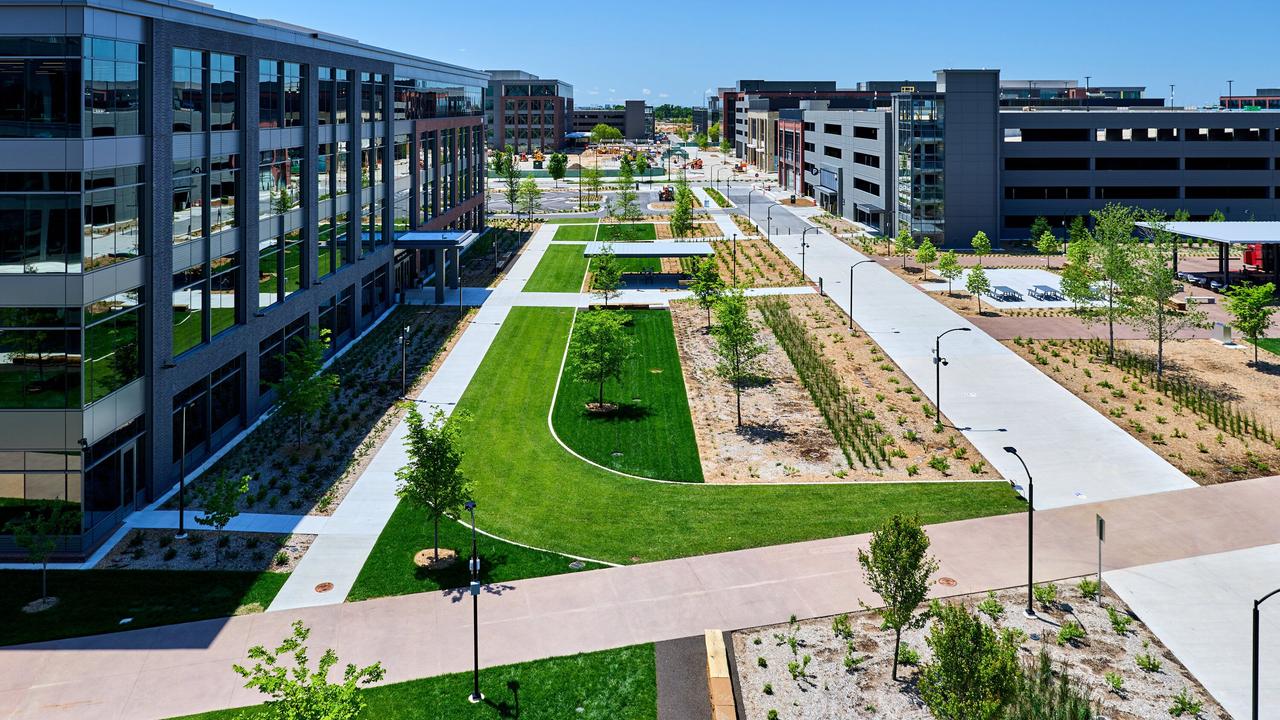
Source: NYT
The centerpiece of Walmart's transformation is its new 350-acre campus in Bentonville. This multibillion-dollar project is designed to rival the headquarters of major tech companies:
- Features include a hotel, food hall, amphitheater, fitness centers, and child care facilities
- Electric bikes for transportation and robots for maintenance
- 750,000 native plants creating an idyllic environment
- 12 buildings to house 15,000 corporate employees
The campus is a stark contrast to Walmart's previous spartan, warehouse-like headquarters. Scott Benedict, a former Walmart executive, emphasizes the importance of this change: "You are in a competition for talent -- even if you are the largest company in the world by revenue -- and having a nice experience and work environment is a great recruiting and retention tool"
1
.Embracing Technology and AI
Walmart is not just changing its physical environment; it's also heavily investing in technology:
- 20,000 tech workers now make up one-third of Walmart's corporate workforce
- Focus on digital advertising, data services, AI, and drone divisions
- Introduction of an AI assistant to help customers shop online
- Expansion of drone home-delivery operations to more cities
These initiatives were highlighted during Walmart's annual Associates Week, where the company made several tech-focused announcements
1
2
.Rebranding for the Digital Age
To shed its old-school image, Walmart is launching a new ad campaign with the tagline "Who Knew?" This campaign aims to showcase Walmart's new capabilities, such as delivering in under an hour and offering over half a billion items online
1
2
.John Furner, CEO of Walmart U.S., emphasized these changes during Associates Week: "Who knew Walmart could deliver in under an hour?" and "Who knew Walmart sells more than half a billion items?"
1
2
.Related Stories
Financial Performance and Investor Confidence
Walmart's transformation appears to be paying off:
- Stock up more than 5% this year, outperforming the S&P 500 and Amazon
- E-commerce business reported as profitable
- Two-thirds of growth expected to come from digital businesses
Brad Thomas, a managing director at KeyBanc Capital Markets, notes the importance of Walmart's marketplace but emphasizes that it "has to be built on the back of a fantastic supply chain"
1
2
.Challenges and Competition
Despite its progress, Walmart faces significant challenges:
- Attracting tech talent to Arkansas, competing with tech hubs like San Francisco and Seattle
- Balancing its traditional low-price strategy with high-end offerings (e.g., $6,000 Louis Vuitton handbags)
- Catching up to Amazon's established e-commerce infrastructure and delivery capabilities
As Walmart continues its tech-driven transformation, it aims to compete not just on price, but on convenience, breadth, and speed in the increasingly digital retail landscape
1
2
.References
Summarized by
Navi
Related Stories
Recent Highlights
1
Google launches Gemini 3 Flash as default AI model, delivering speed with Pro-grade reasoning
Technology

2
OpenAI launches GPT Image 1.5 as AI image generator war with Google intensifies
Technology

3
OpenAI launches ChatGPT app store, opening doors for third-party developers to build AI-powered apps
Technology

